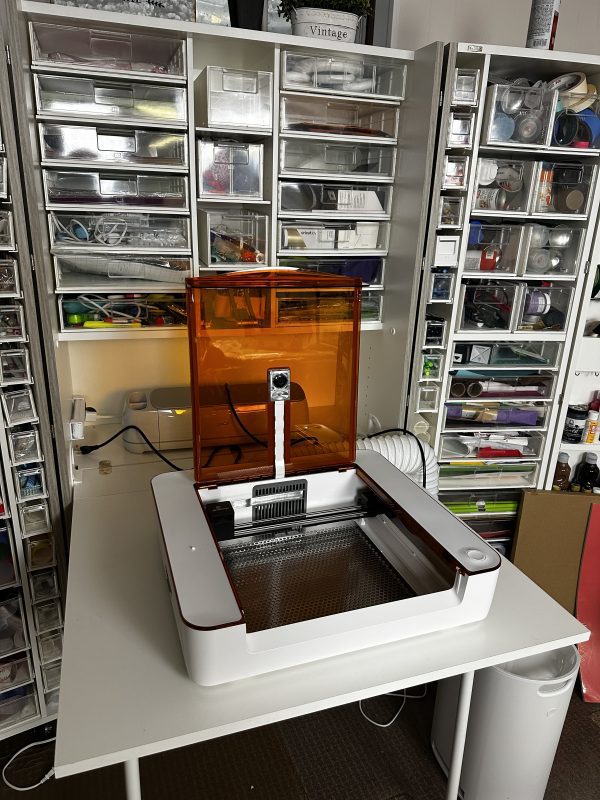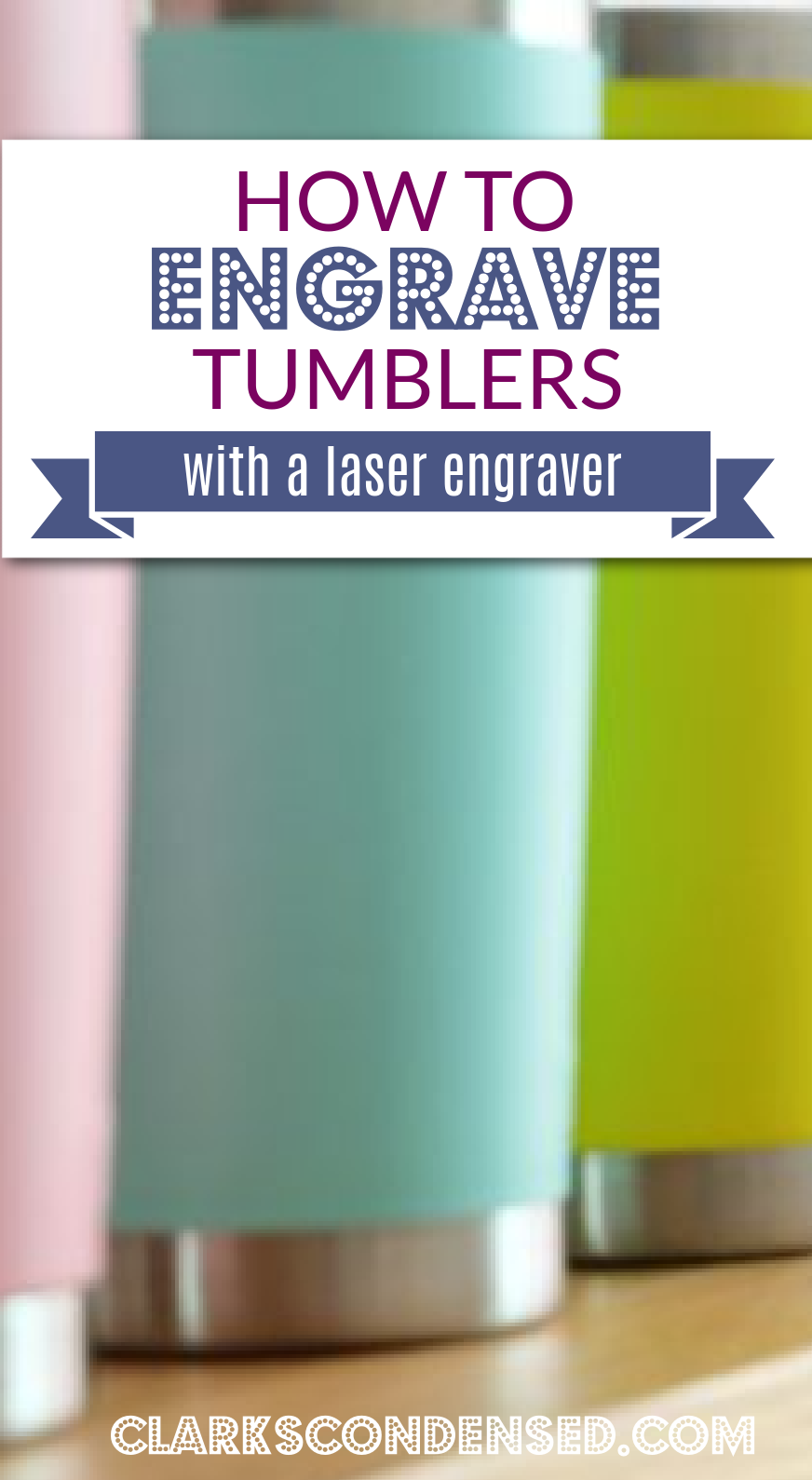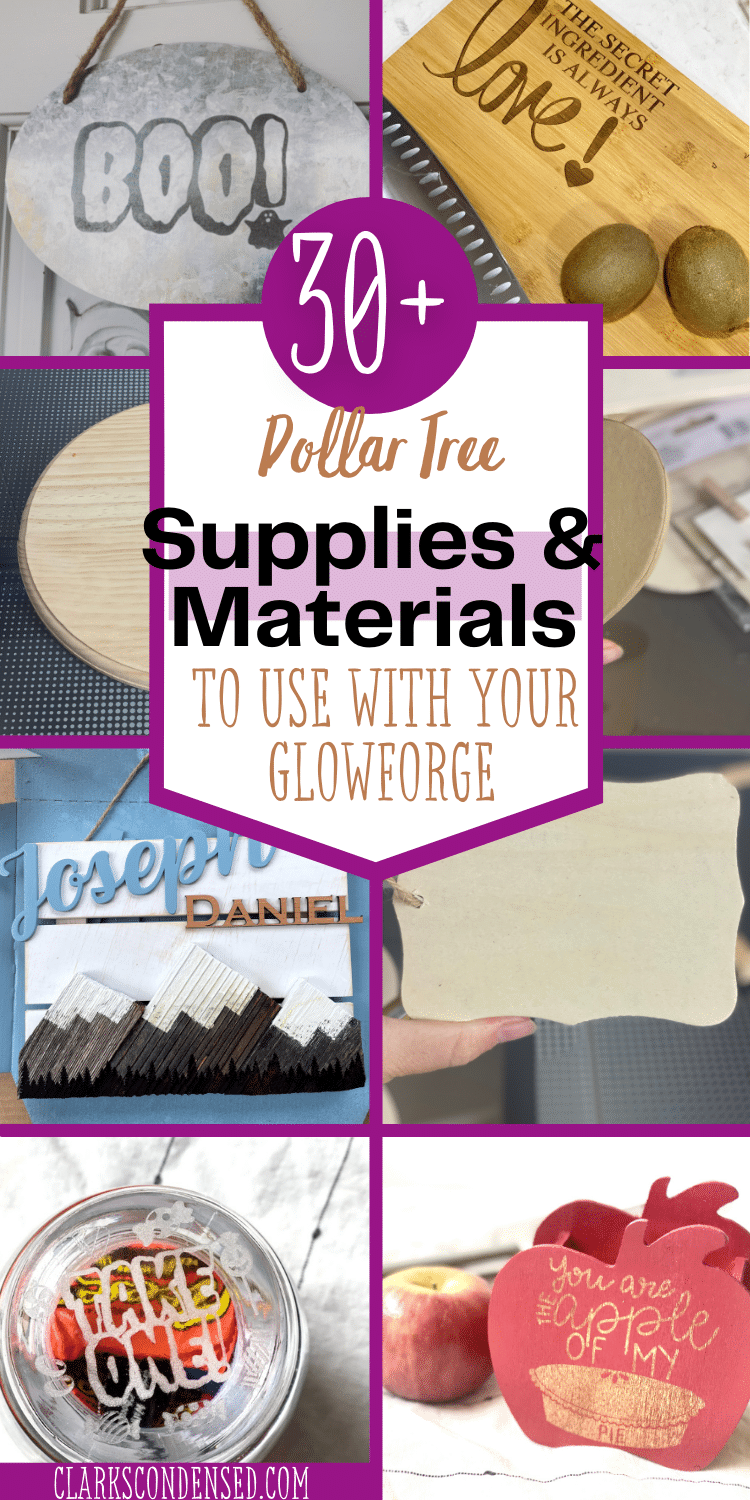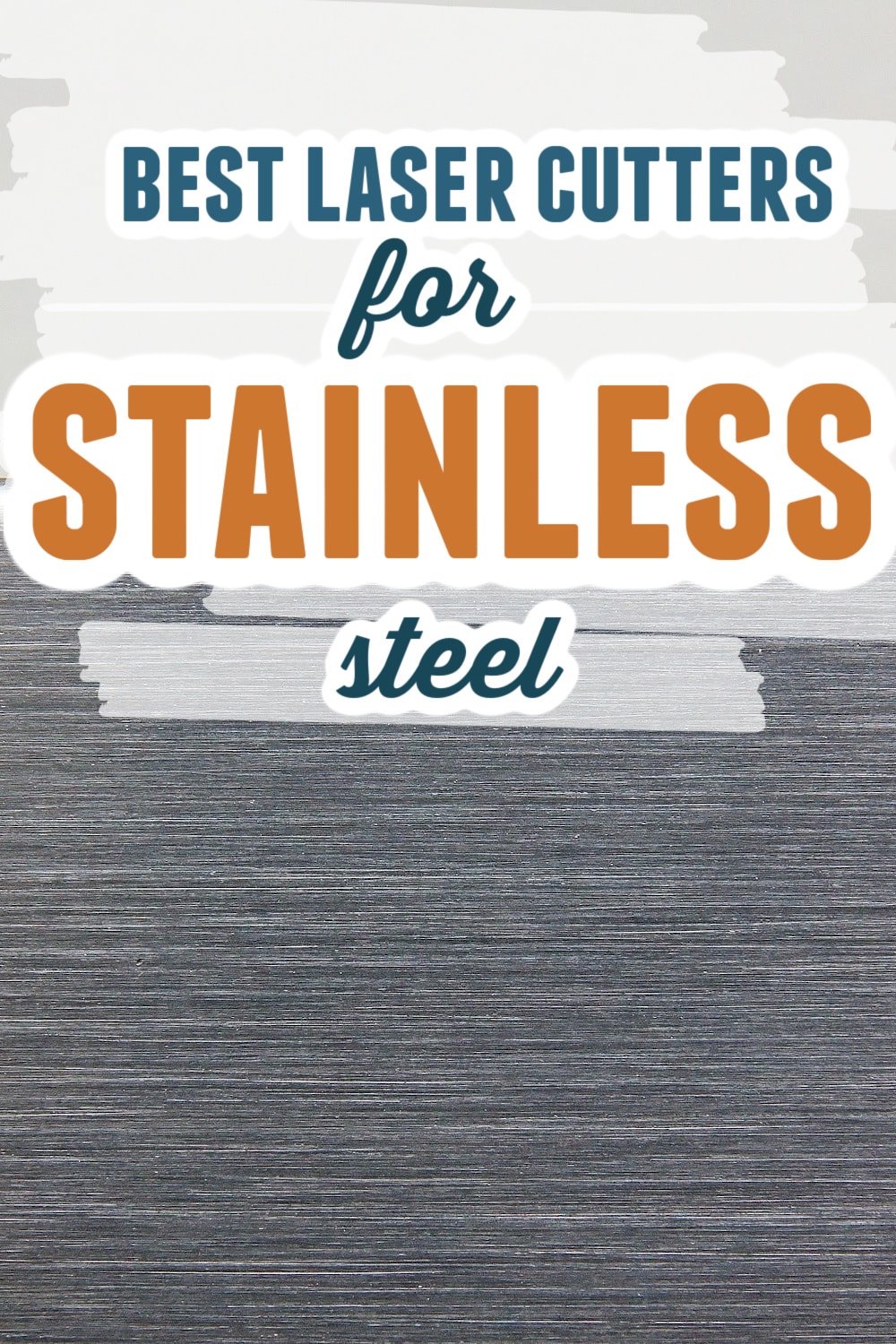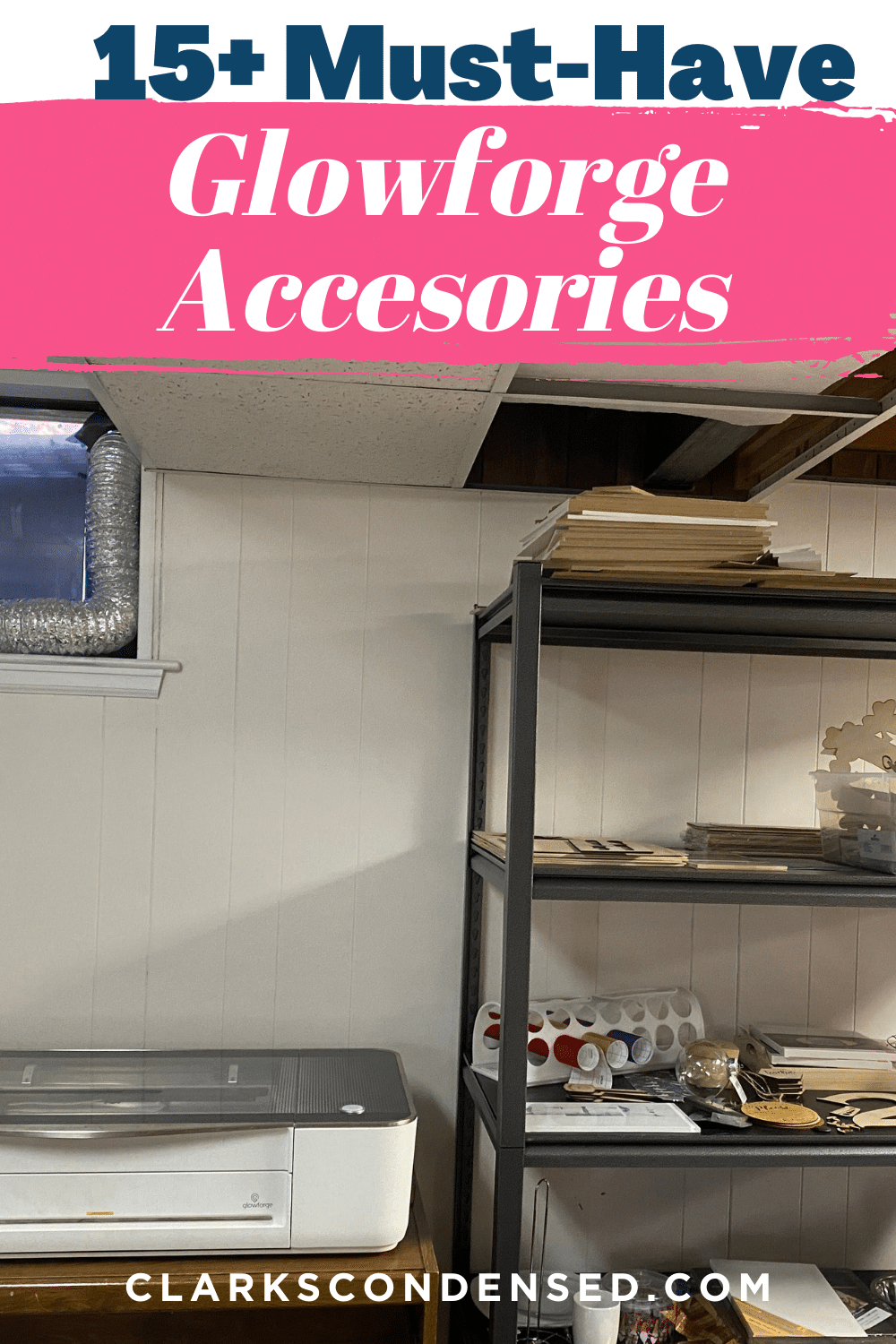Laser Engraving vs. Laser Etching: A Complete Guide
When it comes to personalizing your crafts, you may be wondering if laser engraving or laser etching is the best option for you. Both processes use a laser to create text or designs on your project, but there are some key differences between them. In this guide, we’ll take a closer look at both methods and help you decide which is the best fit for your needs.
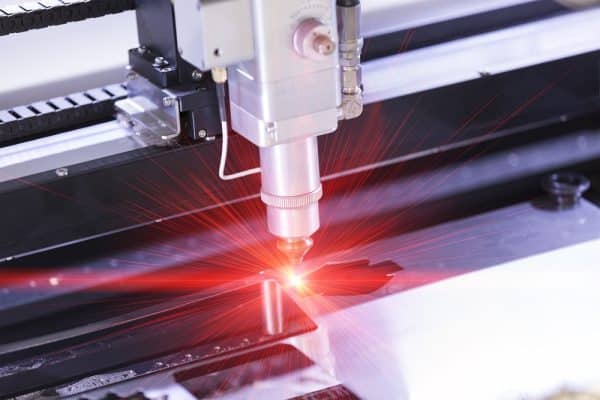
Laser engraving and laser etching are two of my favorite things to do with my Glowforge laser engraver machine! They are so great for making any type of craft, and when I’m in a pinch and need a thoughtful gift, my Glowforge laser machine always comes through for me.
There are so many different things you can make – from Christmas ornaments to customized picture frames you really can’t go wrong! Not only is it used for crafting, but it can be used for a variety of industries as well.
When I first started using my Glowforge, I wasn’t sure what the difference was between laser engraving and laser etching. They are definitely very similar, but there are some key differences you should know about before you dive into your projects.
I’m going to break down everything you need to know about laser engraving vs. laser etching, so you can make the best decision for your project.
The good news is that neither method takes a long time, but the high-contrast marks create a unique design based on the type of material, making for a beautiful design for a variety of surfaces.
What is Laser Engraving?
The traditional engraving process uses a laser beam to remove the substance from the surface of the material, leaving permanent markings on the top layer.
This can be done on a variety of materials, but some of the most popular are:
- Wood
- Leather
- Glass
- Metal
- Stone.
The laser beam removes material by burning it away, so the depth of the engraving will depend on how long the laser is in contact with the surface.
I love using my Glowforge laser engraving machines for this purpose! It makes the laser engraving process so simple and easy, and you can adjust the depth of the mark to make a light or dark marking.
What is Laser Etching?
Laser etching is similar to laser engraving, but the key difference is that instead of removing material, it actually adds material to the surface, making a raised mark.
This process is often used on metals, as it can create a raised effect that is very durable. It works by using a high-powered laser beam to heat up the metal until it melts and then cools quickly, creating a raised design.
The Glowforge makes the laser etching process a breeze as well! Laser technology really is amazing – you can make almost anything with these laser etching machines if you have the right materials!
Another great thing about the Glowforge is that you can have a high heat laser, low-powered laser beam, or different types of lasers depending on your needs.
Their laser marking software is some of the best I’ve seen, and they do a great job of providing the basic principles of laser engraving and etching.
The Glowforge also has a laser-cutting setting you can use for creating beautiful, intricate designs. Instead of going just on the surface of the metal or material, it cuts all the way through, reaching its maximum engraving depth. There are many laser marking machines on the market, but the Glowforge truly is the best for crafting in my opinion.
So, which one should you use for your project?
Well, it really depends on the material surface you’re working with and the effect you’re going for. If you want deep engraving on wood or leather, laser engraving is the way to go. If you’re looking to add a raised design on metal, then laser etching is your best bet. To get a better understanding of the different ways the machine can work, it’s best to test it out starting with a surface of a material you’re familiar with.
Here are a few ideas to get your creative juices flowing!
Ideas for laser engraving:
- Coasters
- Picture frames
- Christmas ornaments
- Puzzles
- Artwork
- Pencils
- Apple Watch bands
- Name signs
- Baby announcement signs
- Holiday decor
- Home decor
- Place cards
- Keychains
- Mugs
- Jewelry
- Cake toppers
- Cards
- Plaques
- Teacher gifts
- Charcuterie boards
- Cutting boards
- QR codes
- Bar codes
- Bare metals
- Metal plate
What Materials Work Best?
When you’re deciding whether to use laser engraving or laser etching for your project, you want to look at the types of material available before you start. While metal and hard materials are typically best for laser etching, there are a lot more options available for laser engraving! The type of process is similar no matter what material you decide to use.
You may also enjoy: Glowforge Materials: What to Cut & Where to Buy Them
Here are a few of our favorites we’ve tried:
Metal
Metal is great for engraving and etching. We’ve used aluminum, brass, and even copper with great success! Just remember that different metals will react differently to the laser depending on their thickness and composition. You also need to spray Cermark on the metal before you engrave for the best results.
Wood
Wood is one of our favorite things to engrave! We love the way the laser leaves a crisp, clean edge on wood projects. Just be sure to avoid using any type of treated wood, as it can release harmful chemicals when heated by the laser.
Leather
Laser engraving leather is a great way to add a personal touch to your favorite accessories. We’ve made custom phone cases, wallets, journals, and more! Just be aware that leather can burn easily, so you’ll want to keep your design simple and your power settings low.
Glass
Laser engraving glass is a great way to add a personal touch to your favorite drinking glasses, vases, and more! Again, glass can break easily, so you’ll want to keep your design simple and your power settings low.
Paper
Paper is another great material to engrave! We love the way the laser leaves a crisp, clean edge on paper projects. Just be sure to use a thicker paper stock (100 lb or higher) to avoid burning through the paper.
Plywood
Plywood is a great alternative to traditional wood if you’re looking for something a little cheaper. Just be sure to avoid using any type of treated plywood, as it can release harmful chemicals when heated by the laser.
MDF
MDF (medium density fiberboard) is another great alternative to traditional wood if you’re looking for something a little cheaper. MDF doesn’t burn as easily as some other materials, so you can use higher power settings without worrying about damaging your project.
Stone
Stone is a beautiful material to work with, but it can be difficult to engrave. We recommend starting with a softer stone like soapstone or alabaster before moving on to harder stones like granite or marble.
Plastic
Laser engraving plastic is a great way to add a personal touch to your favorite products. We’ve made custom phone cases, journals, and more! Just be aware that some plastics can melt easily, so you’ll want to keep your design simple and your power settings low.
Brass
Brass is a beautiful material to work with, but it can be difficult to engrave. We recommend starting with a softer brass before moving on to harder metals like stainless steel or aluminum.
Cork
Cork is a great alternative to traditional wood if you’re looking for something a little cheaper. Cork doesn’t burn as easily as some other materials, so you can use higher power settings without worrying about damaging your project.
If you’re not sure what material to use for your project, we recommend testing a few different ones before you commit to one!
As you can see, there are a lot of different materials that work well with laser engraving and etching. It really just comes down to personal preference! So, what are you waiting for? Get out there and start engraving!
We hope this guide was helpful in deciding whether laser engraving or laser etching is right for your project! If you have any questions, feel free to reach out to us and we’ll be happy to help. Happy engraving!

